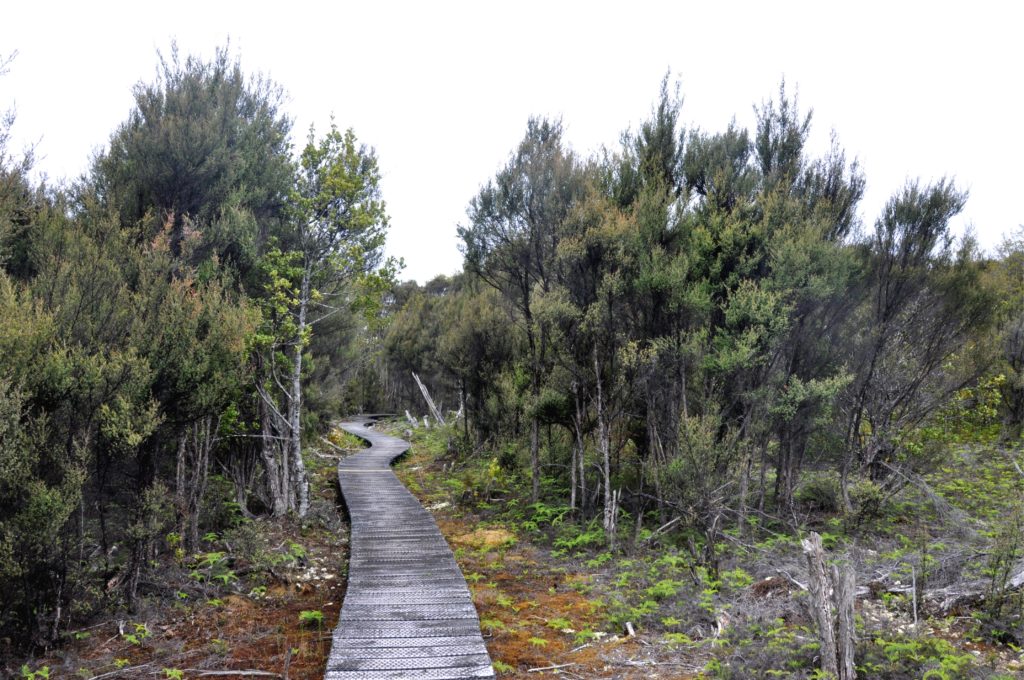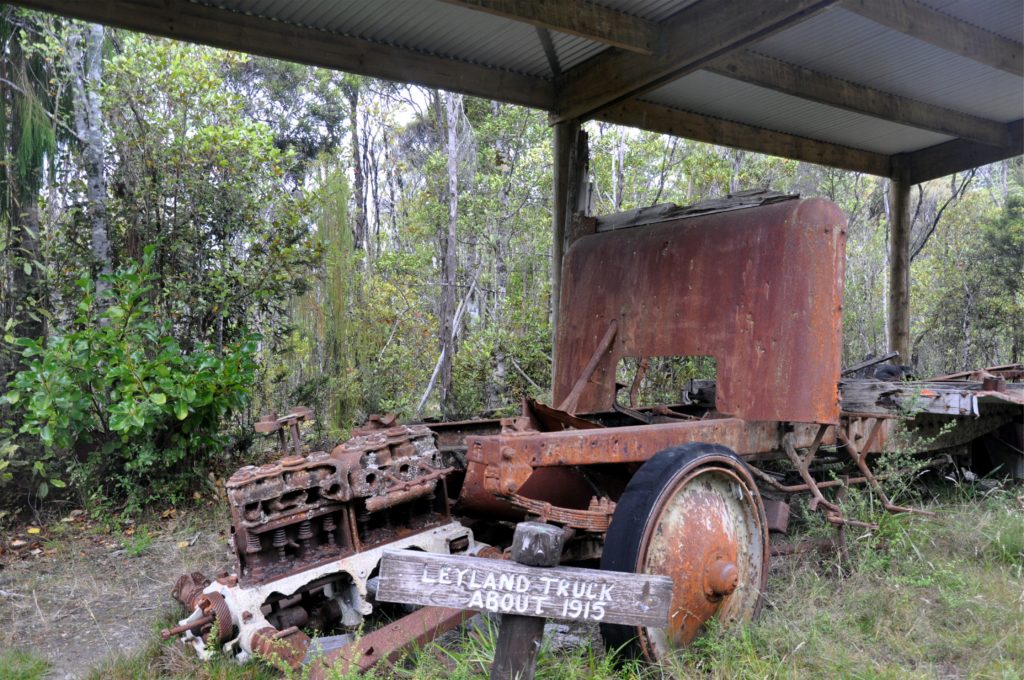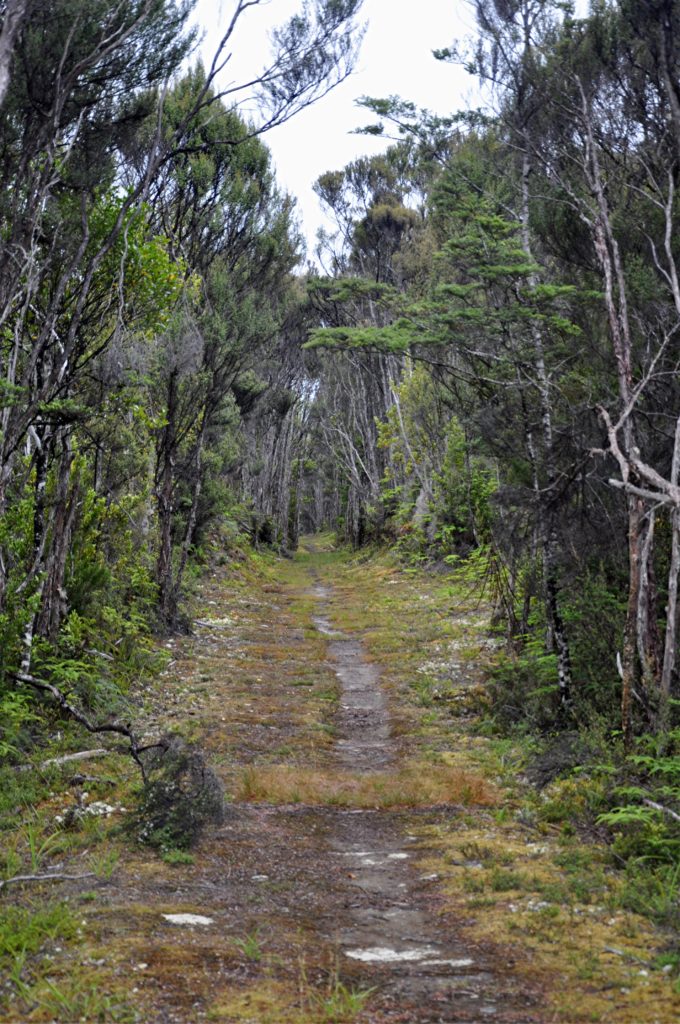On our second day in Reefton, we decided to explore one of the former coal mining areas just outside of town. Although the fortune of Reefton was built mostly on the local gold mines, there were a number of coal mines in the area too. We followed a winding dirt road up a narrow river until we reached a small car park in a clearing in the forest.

The loop track took us through an area of disused coal mines that dated back to the 1880s, when they were set up to produce coal for the nearby gold mines. We climbed gradually until we came to the entrance of one of the former mines.

Quite unusually for New Zealand, this mine was well fenced off. However, when we saw the colour of the water coming out from the mine, it was easy to believe the signs warning of cave-ins and poisonous gases!

We followed the track around through the regenerating forest. The poor soils that are left from the mining operations make the regrowth of the bush a slow process, although natives such as Manuka (New Zealand Teatree) are starting to take hold.

We reached the top of the hill where the incline started allowing the miners to transport the coal out of the valley. Throughout the history of the mines, various methods were used to try an lower the coal down the incline, which was just a little too steep to ever be really successful (or safe)!

An old Garford truck (above) was used initially to power a winch to raise and lower the coal bins, but when this wasn’t successful it was cast aside in favour of various other methods, until finally they settled on using the old Leyland truck pictured above.

As we continued down the incline we passed various discarded parts that had once belonged to failed attempts to get the coal out of the mines in the area. From a fleet of Chevrolet trucks, which weren’t able to cope with the winter conditions to an ambitious project to flume the coal two and a half miles down the river it seems they were never able to settle on a safe and economic way to get the coal out of the mines in this remote area.

As with the gold mines around Reefton, the coal mines were also hugely impacted by the natural faulting in this area. Significant displacement of productive coal seams due to the faults meant that many of the mines were not able to stay in production for long. Along the 3 kilometers of track we walked in this area there were at least seven different mines that had produced coal at one time or another between the 1880s and 1950s when operations in the area ceased.

Coming to the end of the incline, we passed the old winch before finishing up the loop back to the car park. We arrived at the car just as the rain started and were happy to make our way back down into Reefton for lunch before heading home.
